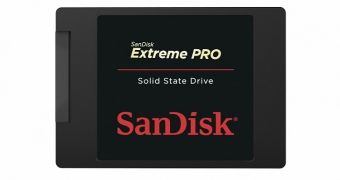We may have gotten the new Intel processor and AMD APU announcements out of the way, but there are lots of other things happening at Computex 2014, like the introduction of new and awesome SSDs.
SanDisk has just unleashed a collection of 2.5-inch NAND Flash-based storage units that put in perspective just how far SSDs have come.
Less than a decade ago, it was hard to find a solid-state drive of over 100 GB, and the ones that did achieve that capacity were expensive as sin.
Now, though, it's possible to have even 1 TB in that package. It still puts HDDs 5 TB ahead, but that doesn't really diminish the progress.
Now, at the Computex trade show taking place in Taipei, Taiwan, storage companies are releasing new drives of all sorts.
SanDisk is among the brands that have hardcore consumer models available for perusal. And they come in up to 960 GB. Not quite a full TB, but close enough that the difference is negligible.
Besides, SSDs are more lauded for their performance than their capacity, most of the time. And the new drives definitely are fast.
Sure, the top read and write speeds aren't quite the greatest we've ever seen, but they're only 10 MB/s short honestly.
The top read speed is of 550 MB/s, while the writing is achieved at 520 MB/s. Meanwhile, the random read and write performance is of 100,000 and 90,000 IOPS (input-output operations per second).
More importantly, the performance disparity between different capacities is almost absent here. Normally, SSDs get slower, the lower the capacity is.
Yet here, the 960 GB, 480 GB and 240 GB all read at up to 550 MB/s, and write at over 500 MB/s. The first two can go as fast as 520 MB/s, as we said, but the 240 GB attains 515 MB/s. A lot better than being slower by 100 MB/s (we've seen it happen).
The nCache Pro technology is credited with this breakthrough, as it “uses DRAM and a two-tiered caching architecture to optimize the speed and endurance of the drive.” DRAM is mostly used for mapping, while the second, NAND-based cache tier does the writes. This minimizes data loss in case power fails.
SanDisk Extreme PRO solid-state drives should be put up for order at some point this month (June 2014), for prices of $189 / €189 (240 GB), $369 / €369 (480 GB) and $599 / €599 (960 GB). EU tags might be higher or lower, we suppose, but exchange rates seldom matter in such things, so we're reasonably confident in these figures.

 14 DAY TRIAL //
14 DAY TRIAL //